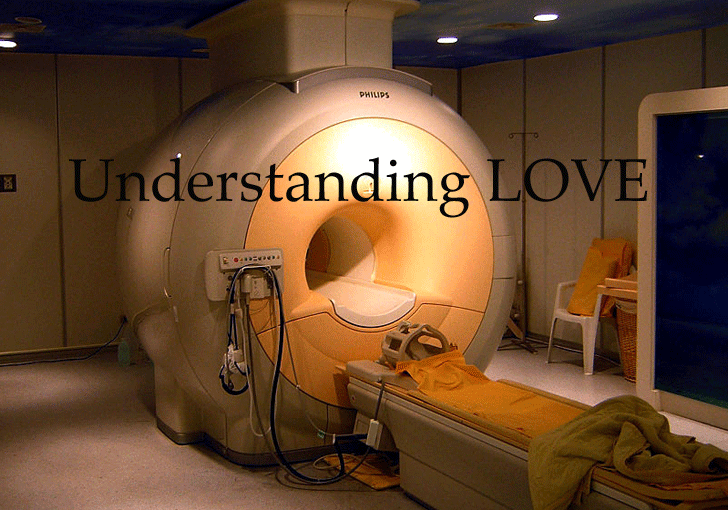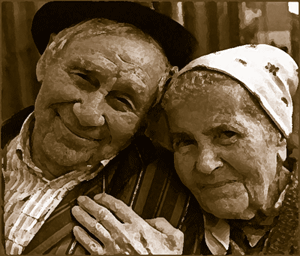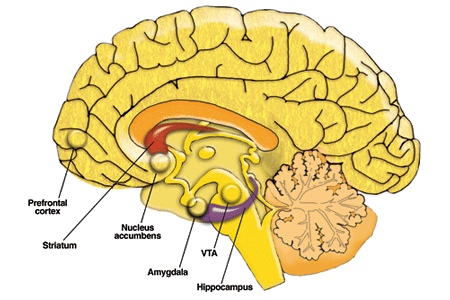

The third phase of love is one that must be earned, and at a steep price. Attachment love happens over time as the other tempestuous feelings quiet down. The dopamine hits from sex begin to diminish in their perceived pleasure and the bonding from oxytocin has allowed a great sense of security and trust to become established. In Attachment love, the personality traits and lifestyle of the beloved become incorporated with our own self-identity.
"Love can start off with any of these three feelings. Some people have sex first and then fall in love. Some fall head over heels in love, then climb into bed. Some feel deeply attached to someone they have known for months or years; then circumstances change, they fall madly in love and have sex... The sex drive evolved to encourage you to seek a range of partners; romantic love evolved to enable you to focus your mating energy on just one at a time; and attachment evolved to enable you to feel deep union to this person long enough to rear your infants as a team."
Dr. Helen Fisher [*]
Attachment love is usually seen in long friendships or in couples who have been together for many years. This special kind of love has many advantages and this is no doubt why it has been hard wired in our brains.
Socially, older generations (parents and grandparents) establish the basis of family and clan structure. Older generations are valuable sources of information like history and technology which contribute to survivability. As such, there appears to be a neural pattern associated with long-term pair relationships. It is focused deep in the pre-conscious areas of the brain, like the caudate nucleus and the ventral tegmental area (VTA). These have sometimes been referred to as the "reptilian brain".

[A] When viewing a photograph of their beloved, people in long-term relationships (average 20+ years) had consistent activity in the VTA and caudate [C]. About one in ten long-term relationships had also maintained active regions associated with Lust and Romance, notably in the striatum. Some MRI scans were almost identical to those of new lovers experiencing Romantic love. These couples reported that they felt happier, healthier and (still) deeply "in love". The hippocampus is where our life memories and self-identity reside. Here it is shown active [D]. Clearly, the "good life" was maintained in the VTA and caudate where dopamine made it so.
 Overall, results suggest that for some individuals the reward-value associated with a long-term partner may be sustained, similar to new love, but also involves brain systems implicated in attachment and pair-bonding.[24]
Overall, results suggest that for some individuals the reward-value associated with a long-term partner may be sustained, similar to new love, but also involves brain systems implicated in attachment and pair-bonding.[24]
Some factors that enabled long-term relationships to flourish were:
1 Not being under great external stress (poverty, sickness, being in a war zone)
2 Neither partner being depressed or anxious
3 Partners having good communications skills
4 Partners regularly doing things together that are exciting, novel, and challenging
5 Partners celebrating each other's successes [source]
|
Active VTA Means "Life is good!"
 The ventral tegmental area (VTA) is a collection of neurons situated at the center of the midbrain. The area functions as a sort of receptor core, receiving messages from other parts of the brain as to how efficiently basic human needs are being met. It is the region where many pleasurable feelings are born, and plays an important role in cognition, impulses, drug addiction, and mental illness. The ventral tegmental area rests on the floor of the midbrain, close to the center. It is the origin of two of the brain's major dopamine pathways: the mesocortical pathway and the mesolimbic pathway. Three other, less significant dopamine channels also have their sources in the ventral tegmental area: the mesodiencephalic, the mesostriatal, and the mesorhombencephalic pathways. When the ventral tegmental area gets messages indicating how and if various needs are being satisfied, dopamine neurons respond appropriately. They become the messaging system by which the ventral tegmental area transmits communication to the nucleus accumbens, another area of the brain that sits in front of the ventral tegmentum. Once in the nucleus accumbens, dopamine levels increase, enhancing pleasurable feelings and thereby "rewarding" the behaviors through which the basic needs are met. [source]
|
Love is a Self-Administered Drug
The MRI scans of people in various states of love clearly reveals that this emotion has priority with our neuro-chemical reward system. What is also clear is that these networks of love trigger themselves -- they "happen" to us for reasons that we still do not fully understand. Although it is the most intimate motivator, we have little control over love.
The "imagined" maternal love from an inanimate cloth doll was sufficient, along with movement and play, to enable the monkeys in Harlow's experiments to be successfully nurtured. Virtual dating and chats allows humans to experience "imagined" Romantic love spanning many years. But there seems to be no faking it with long-term relationships and Attachment love. It happens slowly and in the deep realms of the mid-brain where pleasure is born. But there is a danger inherent in this pleasant, emotional long burn.
Breakups... ouch!
Having a long term relationship requires continuous bonding activities to maintain the benefits of oxytocin. The five factors listed above are designed to do that. Drifting apart, intellectually, socially and sexually, diminishes oxytocin and allows centers that process fear and negative thoughts to become active again. Occasional sex may prolong the status quo of a stagnant relationship with blasts of dopamine, but eventually the overall joy dissipates from the relationship and it ends.
Sometimes the relationship ends abruptly over an argument or discovered infidelity or even death. The pain from a long term "breakup" is both physiological and psychological. MRI scans have shown that the centers involved in Romantic love are actually more active immediately following a breakup as the mind "craves" the dopamine loss. Oxytocin levels drop as intimacy wanes. Serotonin levels, already low in Romantic love, cause depression and obsessive thoughts.
Psychologists say that the human mind can rebound from lost love because that "love" was self-generated in the first place. The neural networks remain in place and the neuro-chemicals will eventually normalize. The mind is hard wired for love and it quickly recovers and is eager to start the process over again and again. The best remedy for the anxiety and depression from a breakup is to fall in love again.
What does this mean?
MRI scans demonstrate that there are specific neural pathways for different kinds of love. These pathways influence our behavior by rewarding us for certain behavior. The reward is in the form of neuro-chemicals that make us more relaxed, shut off negative thoughts, rev up our heartbeat and, most importantly, release dopamine -- the pleasure molecule.
Love is the psychological affect of inherent neuro-chemical processes and neural pathways. Love exists in the individual who feels it but not necessarily in the love object. Regardless, the affects of perceived love are as good as the real thing in meeting our brain's basic developmental needs.
Future areas of inquiry might address the MRI of other emotions, such as worship. Do we have a need to worship something? Is it driven by a neurological network?
What do yo think?
